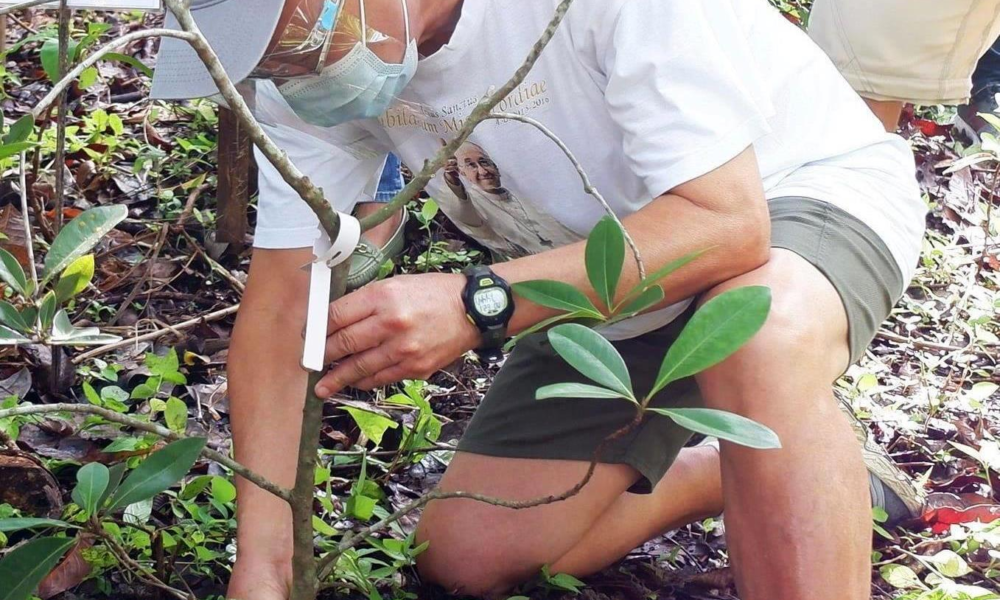
Ever pondered what Philippine native trees actually look like rather than just seeing them online and
on paper pages?
Fortunately, these are found in the arboretum established by the Capiz provincial government in 2018
at the Provincial Park in Roxas City.
It originally housed 57 varieties of plants from fruit-bearing, beach forest, and upland species of trees.
The native trees have significant meanings that connect to the province’s municipalities, symbolizing
the rich history and culture of the province.
For instance, the arboretum has Dao and Jamindang tree species, after which Dao and Jamindan
towns got their names.
The collection also includes Dapdap, Agojo, and Jamul-awon trees, which barangays Dapdapan in
Sapian town and Jamul-awon as well as Agojo in Panay town were named.
The arboretum serves as a museum of Philippine Native Trees to raise awareness for those strolling
along the provincial park, thus turning the park from a hanging-out space into an outdoor learning
area.
It was part of the “One Million Trees in One Day” greening initiative of the Capiz Provincial
Environment and Natural Resources Office (CaPENRO), which intended to plant one million trees in a
provincewide simultaneous tree planting activity in a day.
Subsequently, Jose Cardinal Advincula led the tree-growing and establishment of the Jose Cardinal
Advincula Groove of Philippine Native Trees on June 21, 2021, at the Archbishop’s Residence in Brgy.
Lawaan, here.
The groove was planted with 45 native trees, which correspond to the 45 years of the Cardinal in the
ministry at the time the groove was established, just days before his official installation as the 33rd
Archbishop of Manila.
The cardinal is a nature lover and tree enthusiast.
Another arboretum project was established by the Capiz Ecology and Conservation Center (CECC) of
the Capiz State University (CapSU) – Pontevedra town campus, which is presently growing 72 native
trees in about a hectare site.
The CapSU arboretum of Philippine Native Trees houses Magtalisay, Kupang, Iloilo, Bagras, Narra,
Dangkalan, Dungon Latè, Himbabalud, Balai Lamok, Tapiyay, Banilad, Nato, Salong, Bita, Lipote,
Dapdap, Bagawak, Bagawak Morado, Bani, Molave, Pangi, Baguilumbang,
Pingka Pingkahan, Dangola, Balu, Mountain Agoho, Bayuko, Kalumpit, Katmon, Bakawang Gubat, Tuai,
Lanete, Malugai, Siar, Malasantol, Putian, Igyo, Banai Banai, Malapapaya, Sablot, Sinaligan, Amunat,
and Bogo.
“Currently, we are in talks with the DENR for the establishment of a 20-hectare arboretum in Brgy.
Dolores in Dumalag town,” said CaPENRO acting head EnP Ronald Allan Cullo during a recent
interview over the “PIA Kapihan sa SM” program of the Capiz Information Center of the Philippine
Information Agency, Capiz provincial government, and SM City.
He added that a nursery of native trees will also be established at the targeted area, a National
Greening Program site.
“We are planning to make the area an ecopark,” Cullo noted, adding that the project is a big help and
boost in the province’s reforestation efforts and campaign to bring back the native trees.
The CaPENRO official is hopeful that the project will jumpstart by December after final arrangements
have been made with the DENR.
The arboretum will also serve as a knowledge site about the country’s native trees.





